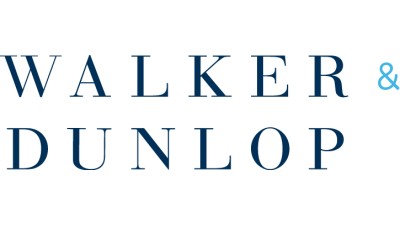4 Reasons Dallas Is Going To Be The Market To Beat In 2016

Ever since he returned to the Lone Star State four years ago, Walker & Dunlop VP Matt Wallach says that he’s been “astounded” by Dallas’ growth. Not only has Dallas’ residential market grown at a steady, healthy pace—“housing prices have increased by double digits as population growth drives demand and tight lending restrictions constrain supply”—but the commercial market has exploded as well. 2016 doesn’t seem to show any signs of stopping, but what specifically are Matt and Bisnow partner Walker & Dunlop excited about?
To learn more about our Bisnow partner, click here.
1. Relocating Companies Boost Population and Economic Diversity
With low cost of living, taxes and regulations, Texas has “worked hard to cultivate its reputation as a haven for entrepreneurs,” Matt says. This is why dozens of corporations are relocating to the Dallas-Fort Worth metroplex and building larger campuses.
More than 15% of the companies relocating to North Dallas have come from California, including Toyota and Kubota. This mass exodus is due to California’s challenging business climate, and its dense cities and high land costs create “significant impediments to building a 2M SF campus like the one that Toyota is building in West Plano.”
With all these market newcomers, Dallas-Fort Worth has not only received a huge population boost, but also a more diverse economy.
“In years past,” Matt explains, “Dallas’ overreliance on either oil or finance invariably led to a bust when commodity prices fell. But the current Dallas economy is diversified, resulting in a balance that is likely to sustain the economy throughout a prolonged national or global downturn.”
That’s not to say, Matt warns, the market is impervious to an economic downturn, but it is better insulated.
2. Multifamily Construction Shows No Signs of Stopping
Multifamily development and construction in Dallas are also robust, and some are beginning to worry about the dwindling number of infill sites available in the city. But that hasn’t stopped developers from building up suburban markets.
Additionally, single-family construction hasn’t been able to keep pace with demand, leading to both a supply shortage and rising home values. With so many first-time homebuyers struggling to break into the single-family market, multifamily remains “the only viable option for many North Texans.”
“Even if an economic downturn occurs,” Matt adds, “few think that multifamily rental rates will fall dramatically.”
Many North Texas multifamily developers believe demand for multifamily housing will persist for the foreseeable future, and the “investment downside has a relatively high floor.”
3. Love Field Is A New Frontier For Development
Since the Wright Amendment in 1979, the Love Field Airport was hindered, in order “to protect Dallas-Fort Worth Airport from competition and to nurture its growth as a global air hub.” But when these restrictions were lifted in 2014, Southwest Airlines and Virgin America finally had the freedom to fly from the airport to anywhere in the US.
Air traffic quickly spiked, Matt explains, as business travelers viewed Love Field as more desirable because of its proximity to Dallas’ CBD and as the city completed a major airport renovation. It was even recently ranked as the best midsized airport in North America, according to J.D. Power. Commercial real estate construction around the airport has risen in the year since the lift.
“Retailers want exposure to the passengers traveling in and out of Love Field, hotels and rental car companies are needed to service the airport travelers and office developers are anticipating tenants that desire proximity to Love Field,” Matt says. “As a result, land prices surrounding the airport have increased substantially.”
4. The Wealth Is Being Shared
An underpinning of the Dallas growth is steady leadership,” Matt says. “Mayor Mike Rawlings, the City Council and City Manager AC Gonzalez have permitted Dallas to thrive by encouraging development, not just of commercial real estate, but of civic pillars like the arts.
"[With] a vibrant arts scene, an active philanthropic community, world-class restaurants and shopping, and outstanding professional sports,” more and more capital floods into the city, and developers look for any place—including historically neglected neighborhoods like Trinity Groves, Deep Ellum, Bishop Arts, The Cedars, and Love Field—to make their mark.
The only thing Matt would suggest to cement Dallas’ bright future is for the Dallas Independent School district to be improved. Considering how much capital and development is entering the market, it’ll only be a matter of time.

